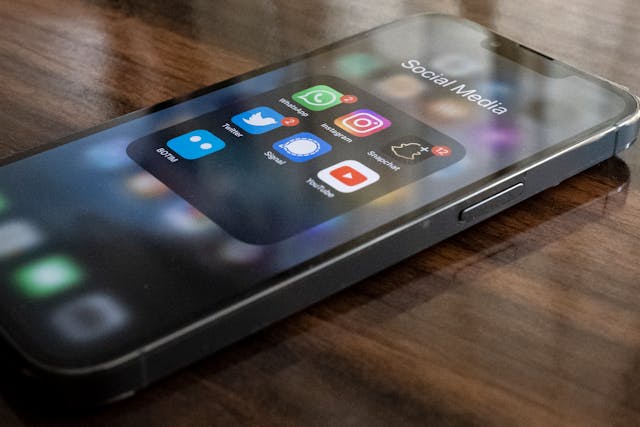Conversational experiences are shaping the future of interactions between companies and consumers. With one-to-one features, customers are getting what they want in record time, and businesses are improving efficiencies and operations across the board, including in sales.
The strongest use case for conversation tech is of course, customer service. However, there are many more uses and advantages to using advanced CX systems today. From the most popular examples of conversational tools to providing omnichannel support, here’s a quick overview.
What are Conversational Experiences in CX?
Conversational experiences are direct interactions between a consumer and a company, with customer service as an example, and different methods such as ChatBots, messaging, and voice assistants. With conversation in mind, experienced developers are using cutting-edge APIs and NLP frameworks alongside AI GPTs, LLMs and ML to develop thenext evolution in ChatBot software that guarantees enhanced conversation between customers and businesses.
Examples of Conversations in CX
According to Exploding Topics statistics, 37% of businesses already use ChatBots for customer support services, with an average 3 times faster response rate. Of course, there are more methods of instant communication and interaction between customers and businesses.
ChatBots
ChatBots are fast becoming the go-to conversational experience for most online users. AI-powered systems are fast, efficient and are almost indistinguishable from a human.
Voice assistants
Voice assistants such as Amazon’s Alexa are easy to use and intuitive. With a single request a customer can reorder groceries and add it to cart in a seamless and interactive experience.
Messaging apps
Messaging apps such as Facebook Messenger and WhatsApp are the most commonly used systems today and are powerful for building relationships between businesses and customers.
Implementing just one of these systems for a greater customer experience will provide numerous advantages for the company and the customer. These include fast and efficient service, reduced agent overhead, and establishment of trust between business and customer.
Driving Personal Experience
Personal experiences are trending right now as a powerful way to close the gap between consumers and companies. Customers enjoy feeling more connected to a business they like, and conversational tools are a powerful method of achieving this. Instant messaging between customers and sales teams, fast responses from AI ChatBots, and checking the status of a delivery through a voice assistant offer a more personal touch that any customer appreciates.
Freeing Up Human Time
Like most apps and tools today, many conversational tools can be automated. This includes customer service queries, which can take a lot of time when carried out by humans. However, automated systems can divert and prioritize many queries, even negating the need for human interaction in minor cases. As a result, human teams are free to work on more pressing tasks that AI isn’t ready for, or getting back to customers when a priority ticket is internally raised.
Increased Customer Satisfaction
Customers just want fast and reliable services, and pretty much it. Modern technology allows for vast improvements across the board when it comes to response times, accuracy, and follow-up services. Efficient systems result in satisfied consumers who leave the experience feeling positive and satisfied with the outcome. This helps solidify the CX in the mind of the customer, who is then likely to return, use new systems in the future, or recommend a business to another.
Cost-Efficient Systems
One of the biggest expenses a company can have is the customer service department, which is typically the main reason for conversational systems. However, outdated systems still require a large pool of human interaction, keeping the wage bills high. Modern systems are more streamlined and automated, meaning a business can reduce the workforce. With advanced systems, companies can also reduce the size of sales teams and, therefore, commissions.
Why Consider Conversational Experiences?
A UK survey by The Guardian found that 78% of customers become frustrated and dissatisfied with customer support services, with most interactions taking between 28 and 41 minutes on average. This could be one of the main reasons why conversational experiences are becoming top trends in web development for business and can even help protect your kids from the web.
Building trust and relationships
Some people can be apprehensive about using new technology, and offering a wide range of systems, such as messaging and AI ChatBots, helps build trust through consumer queries.
Data-driven insights
Messages and interactions can be saved for use later. The data from conversations helps make the process smoother the next time a user interacts, with logged data used to find solutions.
Streamlined internals
Human operators no longer have to play catch up. Previous interactions can be shared across internal systems so the customer and the operators are all on the same page during support.
Reduced customer costs
Once a system is in place, it can operate for a long time with minimal maintenance. This means lower costs for the business, which can be passed on as savings for the valued customers.
Increased interaction volume
Gone are the days of long wait times from massive query volumes. Conversational systems can handle large volumes of queries such as messages, AI prompts and even asynchronous DMs.
When a business wants more engagement and increased customer satisfaction, conversational experiences built into the overall CX can help. Through natural language and dialog, any company can nurture consumer relationships and provide more effective and efficient support.
Always Available Support
Pleasing customers is a large part of modern business, and employee welfare must be addressed, too. Overworked employees aren’t efficient at their jobs, but the phone never stops ringing! Automated systems, asynchronous systems, and messaging apps are available 24/7, and AI is robust enough today to handle minor queries without human input at all. Amazon’s online ChatBot system is a perfect example. And, of course, a machine never needs to sleep.
Instant Response Times
Customers never really like waiting, yet interactions with some of the world’s largest companies have never been more frustrating. Savvy competitors are seeing a gap in the market that can be filled with reliable customer service. With modern conversational tools, consumers can expect and indeed get near-instant responses to common queries. Whether it’s through messaging apps, ChatBots, or virtual assistants, a quick resolution is just a quick question away.
Automated Routine Operations
There are numerous routine operations that agents usually need to handle multiple times per day. However, these are repetitive and can detract from the experience if agents are tired and disinterested. Modern tools can automate many of the standard routine operations that ants usually handle. This includes answering commonly asked questions, checking the order status or delivery status of a product, and basic troubleshooting regarding a specific product or service.
Proactive Customer Engagement
In most cases, it is almost impossible to tell the difference between a modern AI ChatBot and a human agent. Because of this, it is common sense to replace agents with AI in cases where humans can be better used elsewhere. However, the greatest benefit of this is that a company can appear to be more proactive in solving issues in the eyes of a customer. AI and other tools can send automated emails, remind customers of promotions, and even initiate conversations.
Omnichannel Conversational Experiences
Users today use many different platforms to engage with a modern business. Apps and tools are so common that a survey by Master of Code found that only 9% of customers have an issue with using ChatBots and other tools. Here are some benefits of an omnichannel approach:
- A customer can start a support request in a chat app and then move to a phone call.
- Based on browsing history, customers can receive promotions across multiple devices.
- Seamless switching between channels can help a customer continue a support session.
- AI-powered ChatBots can answer queries instantly on smartphones and web browsers.
- Combined channels reduced the stress of a support call for customers waiting.
Omni-channel experiences are critical for creating a seamless experience that makes it easier for customers and employees. An easier experience enhances the customer journey and increases overall satisfaction, helps retain customers and delivers personalized interactions.
Conversational Experiences Support Different Languages
It can be pretty challenging to find a human agent who can speak multiple languages, and when a company does, they can expect to pay a premium to hire them. This is fair to the employee, but it becomes unsustainable on a large scale for a business, and multilingual human agents can become overworked. AI, on the other hand, can work its magic through ChatBots, messaging apps, and virtual assistants to provide support for customers in different languages.
Summary
There is something of a shift towards convenient systems for both businesses and consumers. When systems are easier to use, faster, and more efficient, both parties benefit. Companies can save money, and consumers can save time, which is why advanced tools are now common.
Easy to use tools such as messaging apps, ChatBots and virtual assistants are examples of conversational experiences that modern businesses are using. They help build trust with customers and make internal processes easier, including supporting multiple languages.



